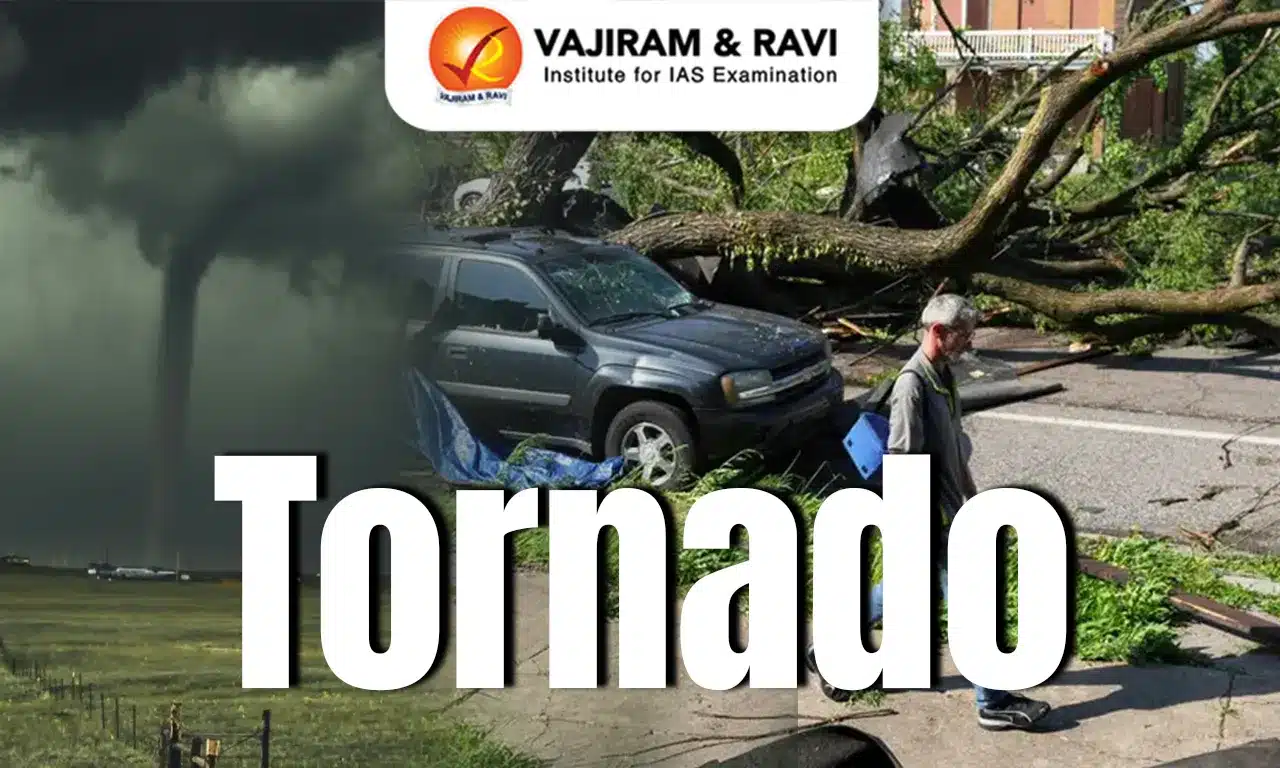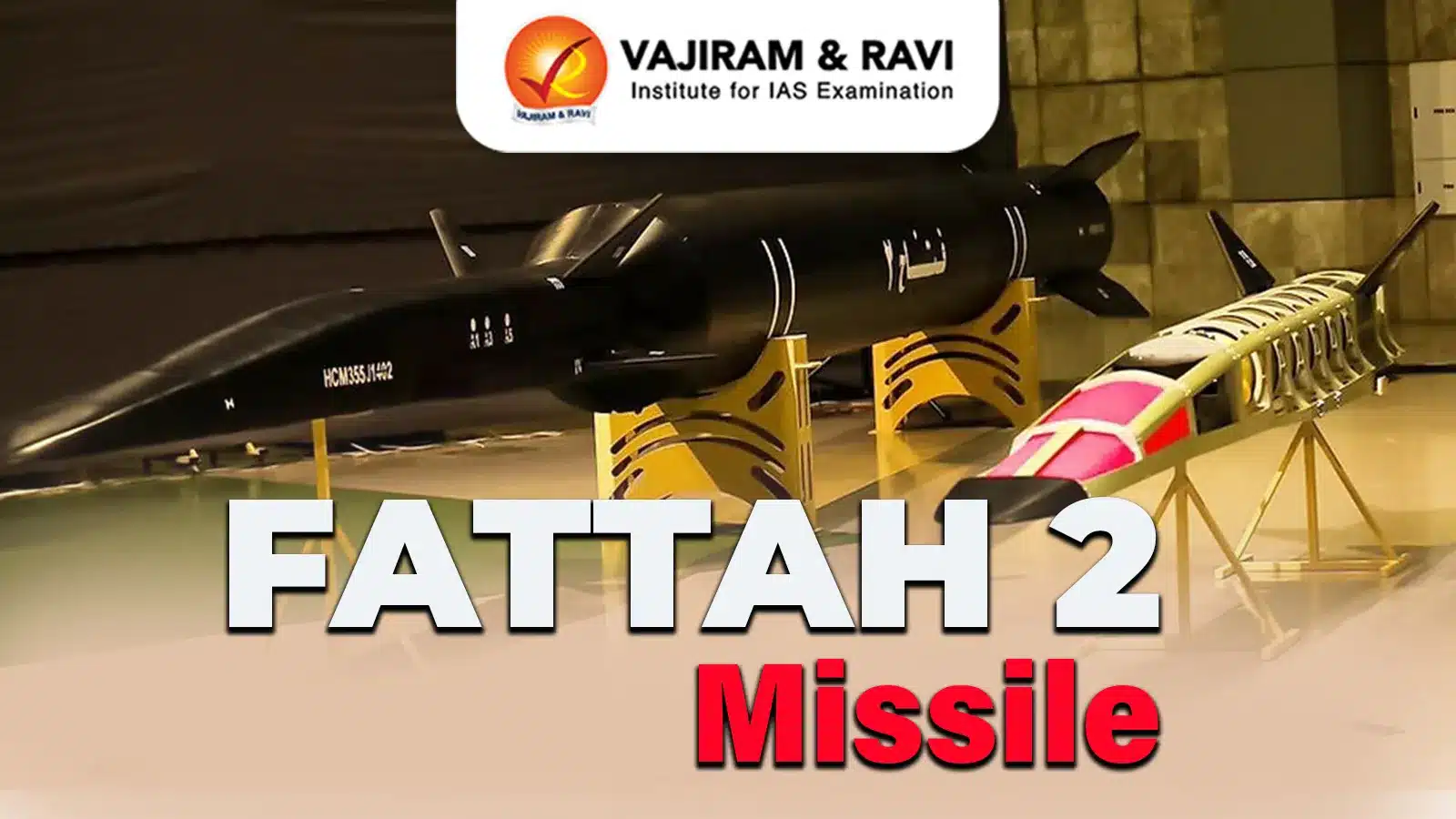Tornado Latest News
Recently, over 20 people have died in the southern United States due to severe storms and tornado outbreaks affecting Missouri and Kentucky.
What is a Tornado?
- A tornado is a vertical, land-based column of violently rotating air that forms from the base of a thunderstorm to the ground.
- It is characterised by a rapid cyclonic circulation and is often seen as a cloud-filled condensation funnel extending from the sky to the ground.
- In cases of low humidity, the tornado may not form a visible funnel and may appear only as a swirl of dust or debris near the ground.
- When such a rotating column of air forms over a water body, it is known as a waterspout.
Wind Speeds and Movement
- Tornadoes typically exhibit wind speeds ranging from 105 to 322 km/h, but some extreme events can exceed this range.
- They can be stationary or move at high speeds, often advancing at around 97 km/h across the landscape.
- The sheer speed and intensity of the winds make tornadoes one of the most destructive natural phenomena on land.
Mechanism of Formation
- Tornado formation is closely linked to interactions between contrasting air masses.
- A collision of warm, moist air (usually from tropical regions) with cool, dry air (typically from polar or upper regions), especially in the presence of a low-pressure system or trough, leads to the formation of thunderstorms and may trigger tornadoes.
- Cyclonic circulations and atmospheric instability further contribute to the rotational dynamics needed for tornado development.
- Geographical distribution: Tornadoes occur most commonly in mid-latitude regions (between 20° and 60° latitude in both hemispheres) where cold polar air meets warm tropical air, producing frequent thunderstorm activity.
- The United States experiences the highest frequency of tornadoes globally, particularly in the region known as “Tornado Alley”.
- Other countries prone to tornado occurrences include Argentina and Bangladesh, which also lie in the tropical-midlatitude interaction zones.
- Measurement: The Enhanced Fujita Scale is used to classify the strength of tornadoes based on estimated wind speeds and associated damage levels.
- The scale ranges from EF0 (weakest) to EF5 (strongest), with EF5 tornadoes being catastrophically destructive, often flattening buildings and uprooting trees.
Tornado FAQs
Q1: What is a tornado?
Ans: A tornado is a rapidly rotating column of air extending from a thunderstorm to the ground, often forming a visible funnel-shaped cloud.
Q2: In which region are tornadoes most common?
Ans: Tornadoes are most frequent in the United States, especially in “Tornado Alley”, which includes states like Texas, Oklahoma, and Kansas.
Q3: What scale is used to measure tornado intensity?
Ans: Tornadoes are classified using the Enhanced Fujita (EF) scale, which ranges from EF0 to EF5 based on wind speed and damage caused.
Source: DW
Last updated on June, 2025
→ UPSC Notification 2025 was released on 22nd January 2025.
→ UPSC Prelims Result 2025 is out now for the CSE held on 25 May 2025.
→ UPSC Prelims Question Paper 2025 and Unofficial Prelims Answer Key 2025 are available now.
→ UPSC Calendar 2026 is released on 15th May, 2025.
→ The UPSC Vacancy 2025 were released 1129, out of which 979 were for UPSC CSE and remaining 150 are for UPSC IFoS.
→ UPSC Mains 2025 will be conducted on 22nd August 2025.
→ UPSC Prelims 2026 will be conducted on 24th May, 2026 & UPSC Mains 2026 will be conducted on 21st August 2026.
→ The UPSC Selection Process is of 3 stages-Prelims, Mains and Interview.
→ UPSC Result 2024 is released with latest UPSC Marksheet 2024. Check Now!
→ UPSC Toppers List 2024 is released now. Shakti Dubey is UPSC AIR 1 2024 Topper.
→ Also check Best IAS Coaching in Delhi
Tags: Prelims Pointers tornado upsc current affairs upsc prelims current affairs
























